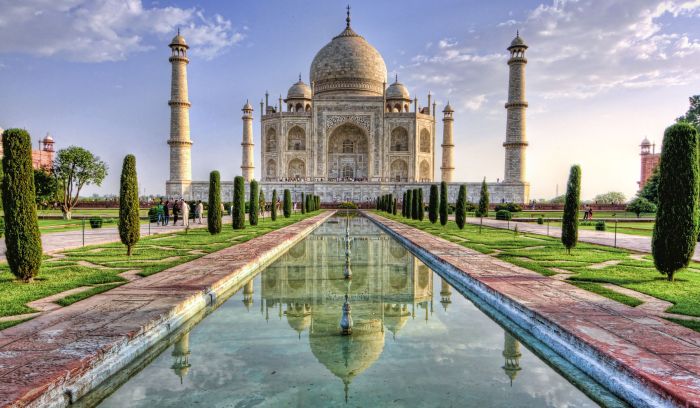
Built under Emperor Shah Jahan’s orders in honor of his favorite wife, Taj Mahal is the most visited tourist site in India
The government of the northern Indian state of Uttar Pradesh has removed the famed Taj Mahal from its list of tourist sites, a subject that today causes an intense debate in the territory.
The Times of India revealed that the controversy erupted last week when the state’s Tourism Minister, Rita Bahuguna Joshi, presented a leaflet on the main attractions of the territory, not including Taj Mahal, a complex of buildings considered the summit of Mogul architecture.
The decision led to strong criticism against the head minister of the state, Yogi Adityanath, who recently stated that this work is not part of the national culture.
For people all over the world, it is one of the most important places in India, but he is an ignorant of history and its importance, said the leader of the Communist Party of India-Marxist, Brinda Karat, referring to the politician, highly questioned by his ultraconservative Hindu ideas.
Uttar Pradesh government wants to give the state a new identity, said Naresh Agrawal of Samajwadi Party.
Weeks ago, historian R. Nath rejected the comments of Adityanath, who affirmed that Taj Mahal is not part of the national culture.
Located in the city of Agra, the monument was built by Indian craftsmen with first materials of the country, highlighted the intellectual in response to those comments.
Nath accused the politician of disparaging achievements in several spheres of human knowledge during the Mughal Empire, a Muslim dynasty that ruled much of India.
‘Without reading available literature on the subject and reviewing historical documents, how can he say that Taj Mahal is not part of Indian culture?’ he asked.
Built under Emperor Shah Jahan’s orders between 1631 and 1653 in honor of his favorite wife, Arjumand Bano Begum, Taj Mahal is the most visited tourist site in India.
In August, the National Archaeological Survey rejected the versions of ultranationalist sectors by noting that the place is a Muslim tomb and not a Hindu temple.
It was the institution’s response to a question from a court analyzing a petition filed by a group of Hindu people, who claimed that the place, declared a World Heritage Site by Unesco, was originally a temple dedicated to the god Shiva.
That hypothesis is endorsed by Hindu extremists but questioned by most Indian experts and historians.
 Escambray ENGLISH EDITION
Escambray ENGLISH EDITION





Escambray reserves the right to publish comments.